We try to domesticate our pets, but they’re wild creatures at heart. Because of this, a lot of their instinctive habits can wreck our living space and drive us nuts. With some effort and understanding, we can accommodate their natural needs and still maintain a comfortable and clean home.
Photos and illustrations by Nick Criscuolo, Kiwi NZ, hehaden, Marissa Bracke, Kristin Wong, r.brownlow, Maggie Osterberg
As humans, when our modern conveniences work against our nature, we simply adjust to fit them in. Animals don’t do this. And when we force them to give up their natural instincts, it doesn’t always work out.
I live with two cats, and I’ve found that learning to live comfortably with them comes down to two basic factors: understanding their behaviour and working with it. Here are some common pet “issues” and how they should be addressed.
Chewing On Stuff
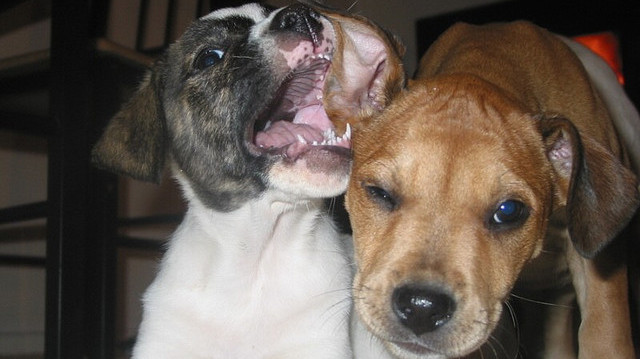
Why They Do It: Chewing is a natural part of pet behaviour. Puppies and kittens often chew because they’re teething, and adult dogs and cats chew on stuff because, well . . . some stuff is just so darn chewable. Sometimes, though, they will chew on things due to a vitamin deficiency, so it’s always worth talking about with your vet. But if your dog or cat is chewing just to chew, there are a few things to consider.
What Doesn’t Work: Don’t just let it happen. Sometimes chewing is dangerous for pets (cords, toxic plants), so it’s important to address it and put a stop to it. Some say taste deterrents aren’t a good idea, but the ASPCA doesn’t object to deterrents that are specifically designed for that purpose. But always be careful about what you’re allowing your pet to ingest.
What To Do Instead: Giving your pet an outlet for their natural inclination is the way to go. Offer them something appropriate to chew for their size. For small pets, Hartz recommends cardboard boxes or toilet paper rolls. For cats, try cat-friendly plants like lemongrass, catnip or catmint. And there are plenty of chew toys available for dogs, just heed these warnings from Cesar Millan:
If you buy your dog a kong type toy check, make sure the hole in the toy is not so big that the dog can get his lower jaw stuck in it. I have seen several emergency cases where a dog comes in with a toy stuck in his mouth. Do not give toys that resemble inappropriate items; for example do not give your dog an old shoe to chew on because he will not know the difference between the old chew shoe and a brand new pair.
If your pet chews for play, make sure to engage in playtime with them. And, of course, hide or get rid of any dangerous objects they’re prone to chew on. Check out our post on how protect gadgets from your pets.
Shedding Everywhere
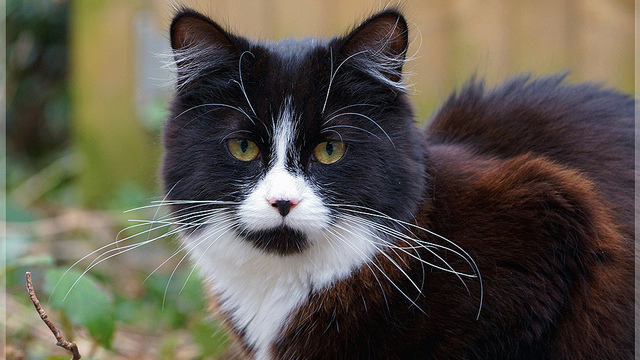
Why They Do It: Of all the “pet issues”, this is the one where blaming them is most unfair. They shed because they’re hairy. And while we know it’s not their fault, shedding can still be frustrating.
What Works: Since dealing with shedding is mostly about getting rid of what’s already there, we’ll just discuss what works. Brushing your pet is probably the easiest way to control shedding, but here are a few less obvious tricks:
- Dust mops: CleanMySpace says some vacuums can just push the pet hair around with the exhaust. They suggest a dust mop with a microfiber bottom.
- Bicarb soda: They also suggest sprinkling bicarb soda over carpeted surfaces before vacuuming. This helps loosen the hair.
- Rubber squeegee: Running a dry squeegee over your carpet can help to pull out the hair, too.
- Natural pet shampoos: According to SheKnows, there are some shampoos that help release your pet’s undercoat, which is where much of the shedding comes from. Before using anything, make sure to review the product thoroughly for safety.
- “Self-grooming” brushes: You install them on your wall, and cats rub against them as they walk by, brushing themselves. Self-grooming posts also exist.
Really, pet hair is something you learn to live with if you have a pet. That doesn’t mean you have to drown in it, though. For me, what’s been most effective is creating a routine based on the methods that work best for my situation. Managing the issue for a few minutes each day can make your home a lot more comfortable.
Peeing On Stuff
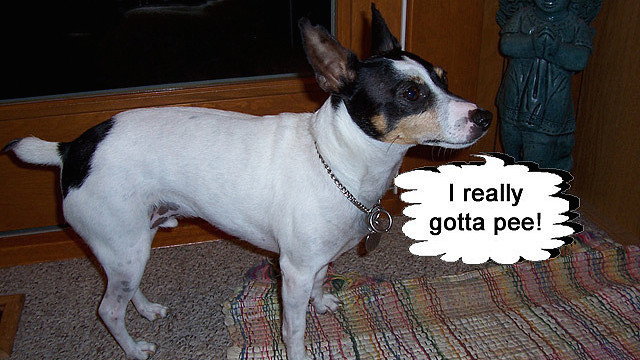
Why They Do It: There are many reasons why cats and dogs relieve themselves where they shouldn’t. Before you do anything else, make sure it isn’t a health-related issue. Many animals will start doing this when they’re in pain or if they have health problems, so once you rule out the other possibilities, it’s best to talk to your veterinarian.
Both dogs and cats can urinate on things to mark their territory, and this usually happens when something or someone new enters your home. The Dog Chat Forum explains:
Usually it is because of feelings of insecurity or a perceived threat. This perceived threat, for example, can be an introduction of a new baby, a new pet, a visitor or even a new piece of furniture. The smell of other animals on your footwear or clothing can also trigger a dog to feel the need to mark his territory.
Neutering and spaying can help curb this behaviour, but here’s what not to do.
What Doesn’t Work: Most experts agree, yelling or “shoving their nose in it” is not a good solution. It just makes your pet afraid of you, and they don’t really learn that their behaviour is wrong. The Daily Puppy explains:
If you rub your dog’s nose in his urine or stool matter as a way of indicating to him that he did something wrong, you might accomplish nothing of the sort, instead only causing your pooch to be terrified of your company. It might cause your dog to perceive you as being not only menacing, but also erratic. This action sometimes scares dogs so much that they resort to “running away” any time they feel the urge to eliminate. If your dog thinks that it’s scary to urinate or pass bowel movements in the middle of the living room, he might make a beeline for your master bedroom, instead.
Beyond that, it’s also just not a very nice thing to do to an animal for doing something that comes naturally to them.
What To Do Instead: So what does work? To start, The Nest has a handful of useful tips for dogs. For example:
- Use Your Dog’s Scent: When you clean your dog’s urine, put the soaked paper towels in his designated potty area. This encourages him to go to the bathroom in that approved location.
- Place Treats In The Dog’s Elimination Area: Dogs don’t want to eliminate where they eat, so if there’s food there, it might discourage him from using that area as a bathroom.
Over at the I Love Dog Site, certified trainer Amanda Cornell suggests using positive noise to redirect your dog’s behaviour. So when you think your dog is about to pee somewhere, use a non-threatening noise to distract him. House-training a puppy is its own challenge, but some of these tips can carry over.
I’ve actually used the first two methods on my cat, and while they initially worked, she did eventually pee outside of the litter box again. She started doing this when we got a new cat. Cats often won’t share litter boxes, so there’s a general rule if you have multiple cats: you should have one extra litter box for however many cats you have.
There are a few other factors to consider when you’re dealing with a litter box:
- Is it in a high-traffic area? Cats like privacy, so make sure the litter box is in a place where your cat feels safe.
- Is the litter box uncomfortable? Older cats might not want to climb boxes with high walls. Or, your cat might be too big for its litter box.
- Did you recently change brands? Some cats can be picky with their litter.
As for spraying, Cornell University’s College of Veterinary Medicine suggests:
Address possible sources of frustration that may be causing your cat to spray. For example, introduce a new diet gradually, or discontinue it until the spraying is under control. Increasing the amount of playtime for an under-stimulated cat may also help ease frustration. Spraying can also result from territorial disputes between cats in the same household. They may need to be separated and reintroduced slowly, using food treats to reward and encourage peaceful behaviour.
Yes, pets can be finicky. But again, they’re only doing what comes natural. So finding a compromise to keep a nice, clean house might mean working to correct the root of their behaviour. Cornell also suggests using odour-neutralisers anywhere your cat has already sprayed.
Scratching Furniture
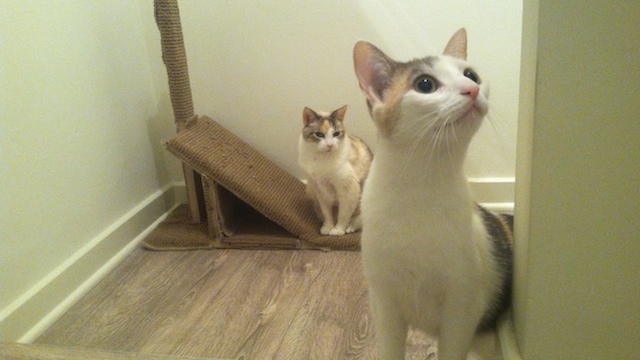
Why They Do It: You can often tell someone is a cat owner just by looking at their couch. Cats love scratching stuff for a variety of reasons — to leave their scent, file their claws. So your couch isn’t a place for sitting. Unfortunately, in your cat’s eyes, it’s a giant manicurist.
What Doesn’t Work: Yelling isn’t going to stop your cat from doing this. This tactic is completely lost on them, as they simply aren’t wired to read social cues. Veterinarian Tony Buffington tells Wired:
“How the hell is your cat supposed to know that you’re yelling at him because you want him to stop scratching the couch?” Buffington says. Without the cognitive ability to connect your outburst to their scratching, cats see only chaotic aggression. “To the cat, you’re this crazy primate who is attacking him for no reason,” he says.
So if you tell your cat “no”, he scratches anyway, and you claim he “doesn’t listen”, you’re wrong. He’s not capable of listening because he has no clue what you’re talking about.
What To Do Instead: We’ve written all about how to keep your cats from destroying furniture with their claws. But the best thing you can do is give them an alternative place to scratch. Once they have a dedicated place to scratch, they will probably leave your couch alone. But you have to pick a scratching post they will actually use. Cat Behaviour Associates recommends a post with the following traits:
- Sturdy and tall: The cat needs to stretch. I made the mistake of getting my cat an awkward post that constantly moved when she scratched. Unfortunately, she went right back to my chair.
- The right material: Many cats like sisal, but some prefer wood or corrugated cardboard. You can experiment and see which your cat prefers.
- In the right location: Does your cat like to scratch after a meal? Put the post by her food bowl. After using the litter box? Put it there. Basically, put it in a location with her comfort in mind.
If a post doesn’t work, you might consider breaking out the water bottle. To recap the rules for water bottle training:
Never yell or make it known to the cat that you are the source of the spritz of water hitting it. You want the cat to associate scratching on the couch or furiously digging into the carpet with the apparently random blast of water, not with you being nearby. That also means, unfortunately, not laughing when the cat has an extremely disconcerted look on its face after getting spritzed.
For more tips, check out the rest of our post on the matter.
Jumping On You
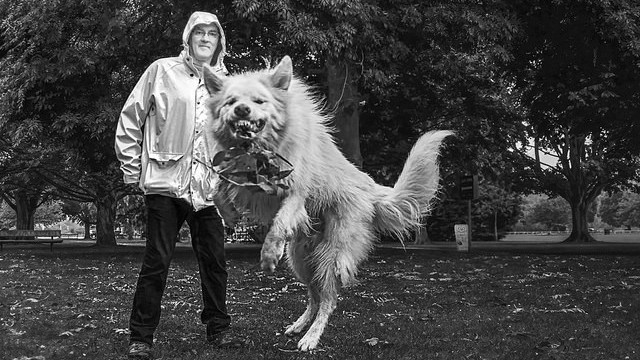
Why They Do It: It seems obvious why dogs would jump on people — they’re shorter than us, and they want to be on our level to say “hello”. Basically, they want to get our attention.
What Doesn’t Work: Obviously, encouraging the behaviour isn’t a good idea if you want it to change. You might be excited to see your dog, but the more excited you are, the more excited she’ll get. The same goes for nervous shouting — this just gets her excited. And, obviously, you shouldn’t try to knee or push your dog away. You could hurt her, and she won’t understand why you do it.
What To Do Instead: When your dog jumps, it’s best to remain calm, but assertive. There are specific tips to do this, according to the ASPCA. For example:
When your dog starts to jump up, stand still, look straight ahead (not at your dog), and pull your hands and arms up to your chest. Calmly wait for your dog to stop jumping. When her front paws touch the floor, immediately look at her and calmly stroke her. If she gets excited and jumps up again, straighten back up and repeat the sequence.
If you’re entering a room and your dog starts to jump up, immediately step back outside and close the door behind you, leaving it open just a crack. Through the crack in the door, say “Sit.” When your dog sits, calmly walk back into the room, kneel down and gently stroke her. If she jumps up again, quickly stand up and walk right back out of the room again, closing the door behind you. Keep repeating this sequence until your dog stops jumping up.
The “Be a Tree Method” is a trick I learned in a dog bite prevention class. Clicker Training explains:
Teach kids to stand still, like a tree. Trees are boring and the dog will eventually go away. This works for strange dogs, and any time the family dog gets too frisky or becomes aggressive.
I tried this with my friend’s dog, and it worked like a charm. It’s worth noting — if your dog does behave aggressively, it’s probably worth seeing a trainer or someone who can offer more extensive help.
Stinking Up The Place
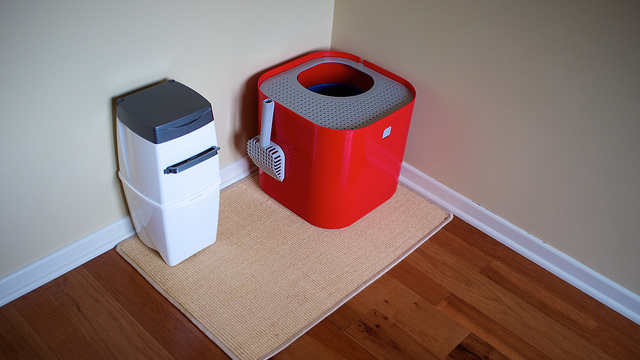
Why They Do It: Again, this isn’t anything that our pets can control, and we don’t blame them. Still, they can be pretty smelly creatures. Here’s how to deal with it.
What Works: For cat owners, it’s usually all about the litter box. And there are a few things that help:
- Bicarb soda: Next time you change out the litter box, add in some bicarb soda to help neutralise odours.
- Location: It’s tempting to hide the box in a small, enclosed area. But that actually traps the smell and keeps it concentrated. Leaving it in an open area allows for better ventilation.
- Routine: Again, it ultimately comes down to sticking with a regular cleaning routine. Organise your litter box tools in a way that makes for quick and efficient cleaning. Petfinder recommends scooping daily, replacing the litter twice a week, and replacing the box itself annually.
For dogs and pets in general, PawNation suggests air purifiers:
Air purifiers and humidifiers will not only improve the air quality in your home but will also go a long way to eliminating all kinds of odours in the household, including those emanating from the litter box. There are special air purifiers ostensibly designed for pet kennels and grooming salons. But they can be certainly used in a domestic environment, too.
For pet accidents, you can also soak up the mess with bicarb soda to help eliminate the odour and keep it from sticking around.
For bad breath, WebMD recommends evaluating your pet’s diet and giving them high-quality, easy-to-ingest food. For dogs, giving them something to chew can help make sure their teeth stay clean, too. Bad breath can also be a symptom of health issues, so be sure to check out the rest of that article to know when to see a vet.
Overall, learning to live with your pet’s wilder side comes down to a few simple things: spending time with them, establishing a routine for cleaning and making your home pet-friendly and comfortable for them. Remember, they don’t know they’re supposed to be domesticated. It’s only fair to do what we can to accommodate their instincts and needs.
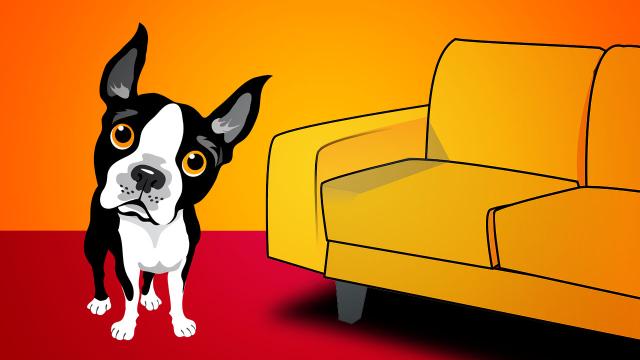
Comments
2 responses to “How To Keep Your Pets From Ruining Your Stuff”
What sort of cat litter box is that in the last pic?
The ModKat. Personally, I can think of better ways to spend $269 than a plastic container with a hole in the lid.
http://www.pawsco.com.au/Product-modkat-red-114.aspx